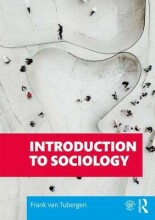Knowledge management - Knowledge storage, retrieval and use
19 important questions on Knowledge management - Knowledge storage, retrieval and use
How can all people in one organization obtain the same knowledge?
How is new knowledge developed?
Knowledge nurtured, developed and used in groups > leads to behaviour.
Why is knowledge important for organizations? GIve 2 reasons
2. Improving organizations
- Higher grades + faster learning
- Never study anything twice
- 100% sure, 100% understanding
Knowledge based theory by Grant
Knowledge based theory is an organization-level theory about what drives the production processes in organizations (knowledge) and how this contributes to organizational performance.
> 1996 Robert Grant
“Organizations are no more than structures that enable individuals to use and share their knowledge”
Knowledge; Effective organizations according to Grant and knowledge based theory
Knowledge is a source for competitive advantage!
What is a unique capability for competitative advantage according to knowledge based theory?
What is knowledge sharing
What is knowledge transfer
Organizational knowledge transfer
Where can be seen a link between knowledge transfer and social capital?
What is the relation between knowledge transfer and performance/innovation?
Sharing between organizations is important! > organizations that absorb knowledge are better capable to deal with challenges.
How is new knowledge created?
New knowledge resonates with innovation, and innovation starts with the bringing together of knowledge from different sources.
What did Nonanka state with the organizational knowledge creation theory?
So new knowledge when people share what they know with each other, when they internalize it into their tacit knowledge, and apply what they have learned to improve how they work.
What is knowledge creation?
Name the 4 flow processes between tacit and explicit knowledge
2. Combination = explicit -> explicit ; combining pieces of explicit KL to new whole
3. Reflection = individual learning: reflect on what you do -> improve and routineze : explicit -> tacit
4a. Internalization: Explicit -> tacit: Reflect on action in teams; integrate new info
4b. Externalization : Tacit -> explicit: knowledge creation in groups. New KL b reflection and combination.
Amnesia is when tacit KL gets lost that had not been externalized, when can this happen give 4 options
- Employees who leave take their valuable knowledge with them or when companies reorganize, merge or downsize
- Projects end and many insights get lost because the focus is just on the end product
- Knowledge gets buried under new information
- Knowledge is not used
How can amnesia be prevented, so resources will not be lost?
What does organizational memory contain?
2. Tacit knowledge stored as episodic knowledge: More tacit, it is the shared knowledge of groups in the organization that links specific events, they would not have the knowledge if they did not share experience. The process that resulted in the end product: key experiences “lessons learned”. You gather the learned lessons after the evaluation and store it in a system
What is the benefit of storing 'lessons learned'
The question on the page originate from the summary of the following study material:
- A unique study and practice tool
- Never study anything twice again
- Get the grades you hope for
- 100% sure, 100% understanding































